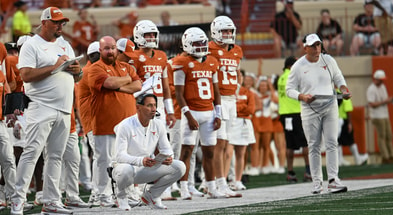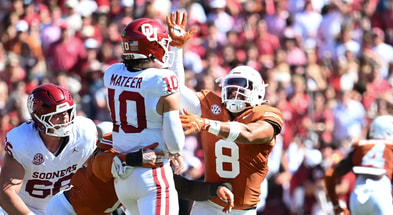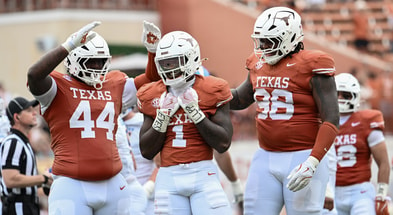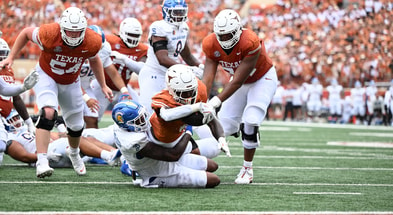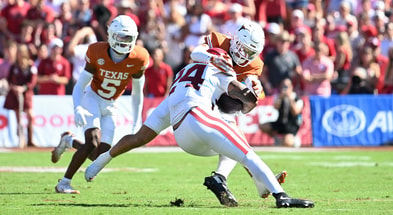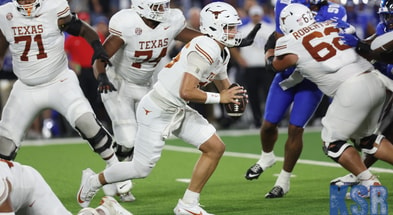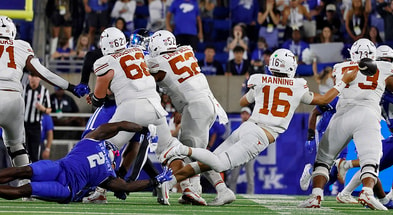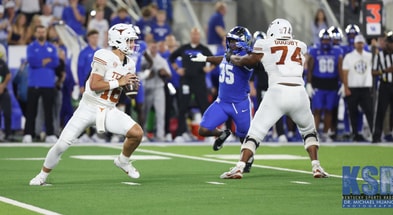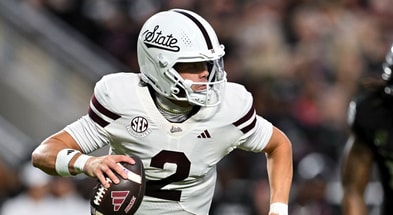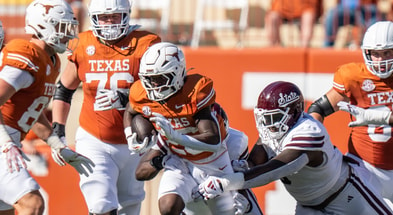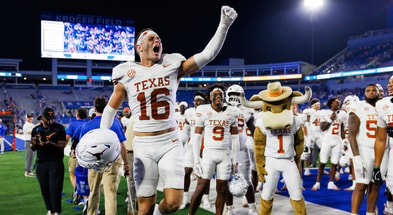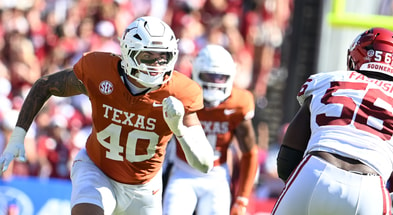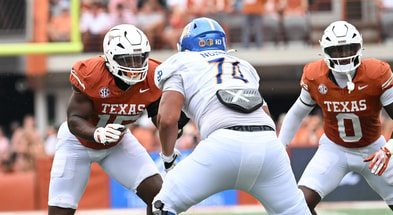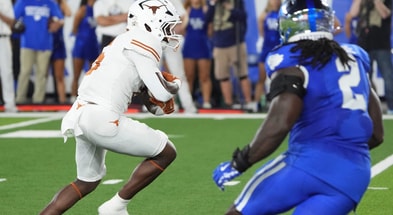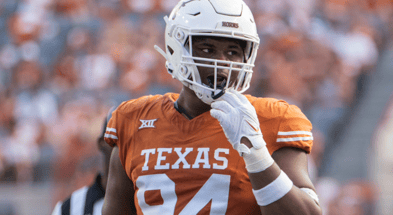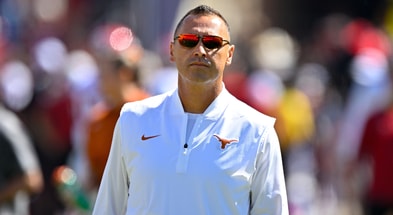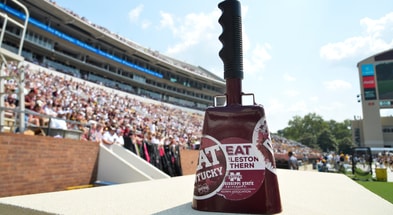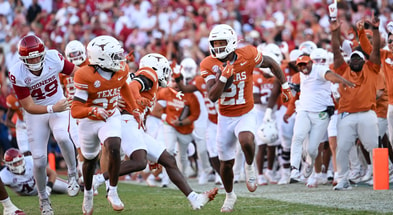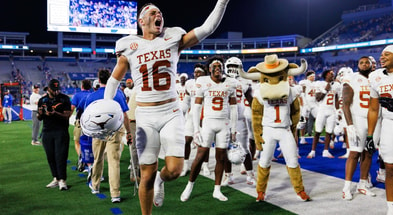What has a successful Texas offense looked like this season?
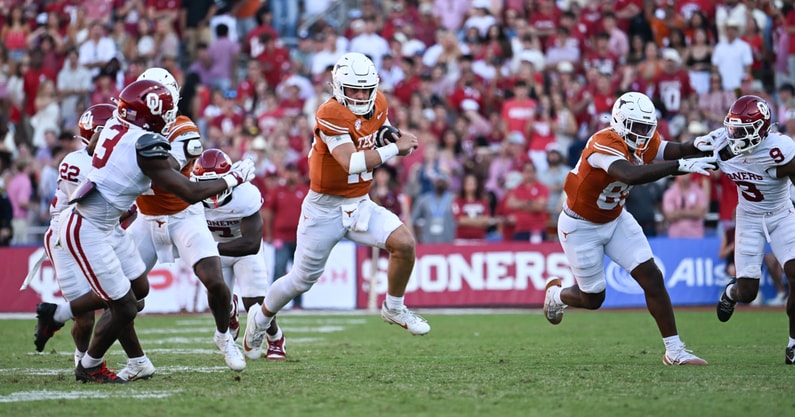
I think we all know what an unsuccessful Texas offense looks like this season.
[Sign up for Inside Texas TODAY and get the BEST Longhorns coverage!]
Just throw on the Kentucky tape, sit back, and watch your blood pressure steadily rise as the Longhorns fail to generate explosive plays, run the football, or score against the worst team in the SEC.
But what about when it’s good? Sometimes it doesn’t feel like Texas has had many strong offensive stretches this year, but that’s far from the case.
Texas has faced three other Power Four opponents, and across those games seven key drives showcase what a successful Texas offense can look like.
Before diving into those, we need to establish a few truths about this team and the path forward.
Texas has to go undefeated the rest of the way to make the playoff. They need to win at least three of their final five for this season not to be a disaster. Four out of five would be acceptable.
For that to happen, the offense needs to average around 21 points per game. The defense is elite enough to withstand that level of output — but it’s worth noting that all five remaining opponents are averaging over 31 points per game, and they account for more than half of the top-nine scoring teams in the conference.
Another truth: the offensive line is a major liability. That has to be schemed around. It won’t be fixed in the next two weeks.
The Seven Drives
This breakdown cares less about results and more about process.
Across these seven drives, Texas scored only three touchdowns. Two ended in field goals, and two — both against Ohio State — ended on turnovers on downs. Even so, these possessions reveal clear tendencies and teachable trends.
First Down Play Calling and Play Action
Texas has to run zone concepts on first down. That’s been a consistent point of success for the Longhorns, especially against the Buckeyes and Sooners. We’ve discussed this ad nauseam on IT.
When Texas went play action on first down, the offensive line simply couldn’t hold up. That needs to be almost entirely cut from the playbook.
A pattern also emerged on second down: when within eight yards of a first down, Texas tended to run — and it often worked. Those calls helped set up later play-action looks.
In their early third-quarter drive against Ohio State, Texas used two second-down runs to establish two later play-action plays. They didn’t generate explosives, but because Arch Manning had clean checkdown options, they were still successful plays.
That’s the key to the play-action game for Texas — giving Manning easy, defined options rather than asking him to create from chaos.
Screens and Reverses
The screen game hasn’t been a reliable strength this season, but several of these drives showed flashes of life.
Texas needs to keep screens and reverses in the script — especially tight end screens. Those have been some of the most efficient “extension of the run game” calls this season. Jack Endries in particular should be featured more in the short game.
Against Ohio State, Manning showed his comfort in the RPO structure, pulling and firing a screen to DeAndre Moore for a near first down.
Later, Texas dialed up a reverse to Ryan Wingo on 2nd and 10 — a crucial down for an offense that struggles in 3rd and long. It worked perfectly, setting up an easy 3rd and 2.
Reverses, quick screens, and touches to Endries and Wingo need to be priority options in those dangerous situations.
Run Game
Believe it or not, Texas can run the ball.
They did it effectively in stretches against Ohio State and even more so versus Oklahoma.
As mentioned earlier, Texas needs to keep majoring in the 2nd-and-6 run — it’s consistently one of their best situational plays.
Getting CJ Baxter back is massive. His broken-tackle conversion on 3rd down against the Buckeyes was one of the most physical runs of the season, breaking a crucial tackle that slipped through the offensive line.
Top 10
- 1New
Jordyn Tyson injury
ASU reveals WR's status
- 2Hot
Tony Vitello
Vols coach to MLB
- 3
Heisman Odds shakeup
Big movement after Week 8
- 4
SEC fines Texas A&M
Faking injuries is costly
- 5Trending
UF Coaching Search
Two non-Kiffin names to watch
Get the Daily On3 Newsletter in your inbox every morning
By clicking "Subscribe to Newsletter", I agree to On3's Privacy Notice, Terms, and use of my personal information described therein.
Outside zone continues to be a winner — just turn on the Oklahoma film. It’s the concept that best fits Wisner’s skill set and this offensive line’s limited strengths.
Wide Receivers
The wideouts may not be the focal point of this offense, but they’ve shown flashes of refinement and chemistry with Manning.
They run strong man-beating routes, especially on deeper outs and flood concepts to Manning’s right.
They’re also capable of explosives — see Wingo’s big play against Florida.
Most importantly, Moore consistently finds open space when plays break down. Texas receivers must continue to be active and creative in scramble situations, as those are often where Manning does his best work.
Manning
This part is simple: Texas must let Arch use his legs.
It’s the only way this offense becomes dynamic enough to win big games.
The OL just needs to hold long enough for him to maneuver. When that happens, Manning can extend plays, attack the intermediate zones, and keep drives alive.
A few prime examples:
- Drive 1 vs. OSU: Manning scrambles on 2nd and 13 to move the chains.
- Drive 2 vs. Florida: Manning takes over, using his legs to extend plays and hit multiple long passes.
- All game vs. Oklahoma: Manning consistently evaded pressure and found receivers downfield — every starting wideout was involved.
A final note: Manning has rarely played with a lead this year. Against Florida, he proved he can lead a comeback. Against Oklahoma, he protected a lead and managed the game. Against Ohio State, he made crucial throws under pressure.
There’s no question he’s capable — it’s about putting him in a position to succeed.
Red Zone
This might be the most important takeaway.
Texas’ red zone issues are glaring. Out of the seven drives studied, they reached the red zone on all but scored just twice.
Some failures were play-calling. Others were on Manning. The worst example came against OSU — Sark called a tush push that clearly wasn’t going to work, and they turned it over on the goal line. On the other hand, Sark schemes Wingo open twice, and Manning never hits him. Another TOD later in the game.
Against Oklahoma, Sark dialed up a wide-open Livingstone, but Manning hesitated.
The solution is straightforward: Manning’s legs must be the focal point in the red zone.
He’s shown the ability to finish drives on designed QB runs and consistently falls forward on contact. Texas needs to keep the defense spread and avoid mano-a-mano trench battles at the line of scrimmage.
The Big Picture
We’ve seen multiple versions of this Texas offense succeed.
They mounted a legitimate comeback against Florida.
They controlled the clock and dominated time of possession against Oklahoma.
They produced efficient runs and sustained drives against arguably the best defense in the country — Ohio State.
The Kentucky game, in some ways, was a fluke. At least they won, and the offense didn’t look that bad in the other Power Four matchups. Still, if play-calling and quarterback play remain inconsistent, Texas will continue to flirt with disaster.
Sark’s Core Principles Moving Forward
- Zone run plays on 1st and 2nd down to create manageable 3rd-and-shorts and open play-action opportunities.
- Screens and reverses as “get out of jail free” concepts — especially to Wingo and Endries.
- Manning’s legs as a constant factor to create explosives and positive plays on 2nd and long.
- Avoid penalties and turnovers at all costs.
- QB runs in the red zone — spread the defense, trust the WRs, or let Manning win 1-on-1.
- Play with a lead and replicate the Oklahoma game plan when possible.
Texas has to find ways to win against better offenses while dealing with a clearly inferior offensive line.
To do that, they’ll need to follow these principles and embrace the grind of low-scoring, physical games.
Luckily for Arch Manning and Steve Sarkisian, they have the best defense in the SEC to back them up.
